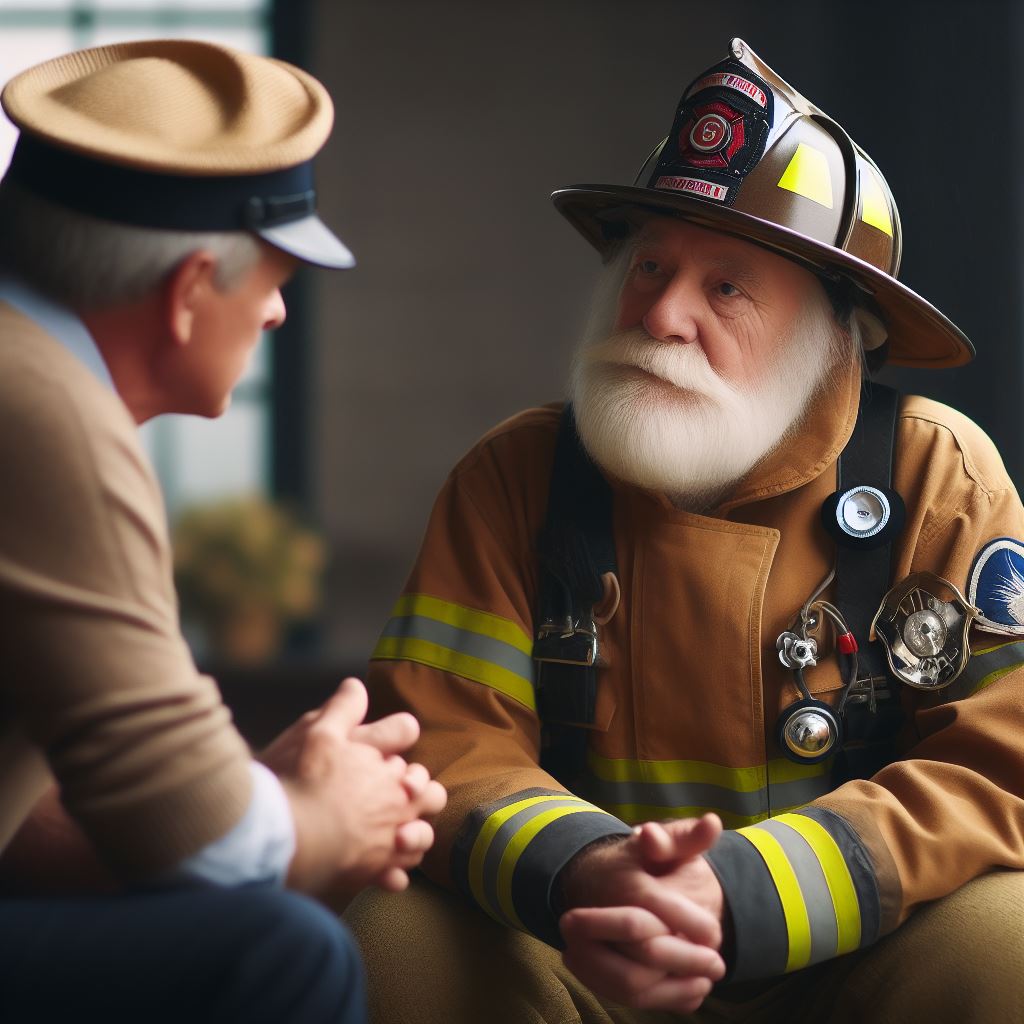Introduction
The history and evolution of the NZ Fire Service is an intriguing topic.
Understanding its past helps us appreciate its present accomplishments and future direction.
Knowing how the service has developed over time allows us to grasp the challenges they faced and the solutions they implemented to protect lives and property from fires.
It also provides valuable insights into the changes in technology, firefighting techniques, and the overall growth and development of the country.
By exploring the NZ Fire Service’s history and evolution, we can gain a better understanding of the significant role it plays in society and the vital services it provides to the community.
Early Firefighting Efforts in New Zealand
Overview of the early years of firefighting in New Zealand
During the early years of firefighting in New Zealand, which can be traced back to the colonial period, the approach was primarily informal and community-driven.
In the absence of formal firefighting institutions, citizens took it upon themselves to protect their communities from the devastating effects of fires.
Challenges faced during this period
This era posed significant challenges for firefighting efforts.
Firstly, there was a severe lack of specialized equipment and trained personnel.
Volunteers relied on primitive methods, often using buckets and hand pumps to extinguish fires due to tool shortages.
Moreover, the susceptibility to fires increased due to widespread use of wooden buildings and thatched roofs.
Furthermore, the remoteness of many settlements compounded the difficulties, as assistance from neighboring areas was often limited or delayed.
Establishment of the first organized firefighting groups
Despite these challenges, the communities in New Zealand displayed remarkable resilience and determination in the face of adversity.
Recognizing the need for a more structured approach to firefighting, the first organized firefighting groups began to emerge.
These groups were typically formed by concerned citizens who banded together to protect their neighborhoods.
Personalized Career Consulting
Unlock your potential with expert career advice tailored to your goals. Get personalized guidance and actionable steps toward your dream career in New Zealand.
Get StartedThey underwent rudimentary training and established protocols for responding to fires.
While still reliant on basic equipment, these early firefighting groups laid the foundation for the development of more sophisticated firefighting institutions in New Zealand.
The establishment of organized firefighting groups marked a milestone, paving the way for formalized fire services.
Read: Firefighting and Ecology in New Zealand
The Formation of the NZ Fire Service
The establishment of the New Zealand Fire Service was a culmination of various factors and significant events that occurred over time.
The NZ Fire Service has played a crucial role in protecting lives and property from fire-related disasters since its humble beginnings.
Overview of the Factors
- Rapid Urbanization: The rapid growth of cities and towns in New Zealand necessitated the need for a professional firefighting force.
- Increasing Fire Incidents: The rise in the number of fire incidents emphasized the urgent need for a dedicated fire service.
- Limited Resources: Small volunteer brigades were inadequate in handling larger fires and lacked the necessary equipment and resources.
- Modernization: The need for a modern firefighting approach led to the establishment of a centralized fire service.
Key Events and Milestones
- 1875: The first organized fire brigade, Auckland Fire Police, was formed in response to the increasing fire incidents.
- 1896: The National Fire Brigade Union was established to address common issues and advocate for improved firefighting services nationwide.
- 1903: The first electric fire alarm system was installed in Wellington, marking a significant technological advancement.
- 1916: The Council Fire Brigade Act was passed, allowing local authorities to establish and maintain fire brigades.
- 1925: The Fire Brigades Act was introduced, providing a legal framework for the operation and governance of fire brigades.
- 1975: The Fire Service Act was enacted, replacing the Fire Brigades Act and establishing the New Zealand Fire Service Commission.
NZ Fire Service Act and its Significance
The introduction of the NZ Fire Service Act in 1975 marked a turning point in the history of firefighting in New Zealand.
This legislation played a pivotal role in shaping the organization and operations of the NZ Fire Service.
It provided a clear mandate for the service to operate, set guidelines for recruitment and training, and established a unified command structure.
The NZ Fire Service Act also allowed for the establishment of the National Headquarters, regional offices, and fire stations throughout the country.
It enabled the recruitment of professional firefighters and the provision of comprehensive fire prevention and education programs.
The Act emphasized collaboration between the NZ Fire Service and other emergency response agencies.
This coordination ensured a more efficient and effective emergency response system for the benefit of the community.
In fact, the establishment of the NZ Fire Service was a result of various factors, including urbanization, increasing fire incidents, and limited resources.
Transform Your Career with a Professional CV and Cover Letter
Stand out to employers with an ATS-optimized resume and tailored cover letter designed to match your dream role. Let us craft your job application materials for success!
Get StartedKey events and milestones paved the way for its formation, culminating in the introduction of the NZ Fire Service Act.
Today, the NZ Fire Service continues to evolve and adapt to new challenges, providing a vital service that safeguards the lives and property of New Zealanders.
Read: Volunteer vs Career Firefighters in NZ
Evolution of the NZ Fire Service
Over the years, the NZ Fire Service has undergone significant changes, developments, and expansion of services.
With the inclusion of new technologies, the roles and responsibilities of firefighters have also evolved to keep up with the advancing times.
Overview of Major Changes and Developments
In the early days, firefighting was a community-based effort, with volunteers forming the backbone of the fire service.
As cities grew, the need for a more organized and professional fire service became evident.
In 1861, the first Metropolitan Fire Brigade was established in Dunedin, becoming the precursor of the modern fire service.
The Uniformity Act of 1886 brought about significant changes, standardizing firefighting practices across the country.
In 1926, the New Zealand Fire Service Commission was formed, giving birth to the centralized firefighting organization we know today.
Expansion of Services and Inclusion of New Technologies
As the population increased and urban areas expanded, the NZ Fire Service extended its services to cover a wide range of emergencies.
These services now include urban search and rescue, hazardous materials response, and medical assistance.
New technologies, such as thermal imaging cameras and specialized firefighting equipment, enhance firefighting operations’ efficiency and effectiveness.
Improved communication systems and GPS trackers enable firefighters to respond to incidents quicker and collaborate seamlessly.
Boost Your Career with a Standout LinkedIn Profile
Attract recruiters and expand your network with a fully optimized LinkedIn profile tailored to highlight your strengths and professional goals. Let your profile open doors to new opportunities!
Get OptimizedFire safety education programs have also been introduced to raise public awareness and prevent emergencies before they occur.
Changing Roles and Responsibilities
Firefighters are no longer just extinguishing fires; their responsibilities have expanded to include prevention, inspection, and community education.
Emergency medical response has become a significant part of their role, with firefighters often being the first on the scene to provide life-saving care.
With the increasing focus on prevention, firefighters now conduct building inspections and enforce fire safety regulations.
Training and professional development programs have been implemented to equip firefighters with the necessary skills to tackle evolving challenges.
Firefighters also work closely with other emergency services, such as police and ambulance, to provide a coordinated response during major incidents.
In essence, the NZ Fire Service has come a long way from its humble volunteer-based origins to a modern, technologically advanced organization.
With expanded services, the inclusion of new technologies, and evolving roles, firefighters play a crucial role in ensuring the safety and well-being of the community.
Notable Moments and Achievements
Significant events and accomplishments in the history of the NZ Fire Service
Throughout its history, the NZ Fire Service has encountered pivotal moments that defined its evolution.
One such event occurred in 1947 during the Ballantyne’s Fire, a devastating blaze that engulfed the iconic department store in Christchurch.
This incident highlighted the courage and resilience of firefighters as they battled the inferno, risking their lives to save others and protect property.
Effective firefighting strategies were emphasized by the response to the Ballantyne’s Fire, spurring advancements in safety protocols and equipment.
Specific incidents or disasters that shaped the organization
Specific incidents and disasters have played a crucial role in shaping the NZ Fire Service into the organization it is today.
Prompted by the Erebus disaster in 1979, Air New Zealand enhanced emergency response capabilities and coordination.
The tragedy served as a sobering reminder of the unpredictable nature of emergencies and emphasized the need for constant preparedness and training within the fire service.
Examples of the NZ Fire Service’s contributions to the community and society at large
Beyond firefighting, the NZ Fire Service has made significant contributions to the community and society at large.
Firefighters have worked tirelessly, conducting proactive fire prevention campaigns and educational initiatives to raise awareness about fire safety.
The service has actively provided support during natural disasters, offering rescue operations and humanitarian assistance to affected communities.
These efforts exemplify the NZ Fire Service’s commitment to serving the public and fostering a safer and more resilient society.
In summary, the NZ Fire Service’s history is marked by notable moments and achievements that reflect its dedication to safeguarding lives and property.
The service continues to demonstrate its vital role in protecting New Zealanders’ well-being, confronting disasters and engaging in community outreach initiatives.
Read: NZ Firefighters: Stress Management Tips

Current Structure and Operations
The New Zealand Fire Service has undergone significant changes in its organizational structure and operations over the years.
This section will explore the NZ Fire Service’s current structure, operations, organizational branches, departments, and services provided.
Introduction to the Current Organizational Structure
The NZ Fire Service operates under a hierarchical organizational structure that promotes efficiency and effective coordination.
At the top of the structure is the Chief Executive, who is responsible for overseeing the entire organization and setting strategic goals.
Reporting directly to the Chief Executive are the Deputy Chief Executives, who manage specific portfolios within the organization.
Various branches and departments, each with their responsibilities, exist below the Deputy Chief Executives in the organization.
These divisions ensure a streamlined flow of communication and enable efficient handling of operations on the ground.
Different Branches and Departments
Operations Branch
This branch is responsible for the frontline emergency response activities.
It encompasses different regions throughout New Zealand, each headed by a Regional Manager.
Firefighters, specialized response teams, and emergency dispatchers fall under this branch’s jurisdiction.
Training and Capability Development Department
Ensuring that firefighters are well-trained and equipped is the primary focus of this department.
It develops training programs, conducts research, and monitors professional standards to enhance the skills and capabilities of firefighters.
Fire Risk Management Department
To prevent and minimize the occurrence of fires, this department focuses on promoting fire safety within communities.
It provides educational resources, conducts fire safety inspections, and collaborates with other organizations to raise awareness about fire prevention measures.
Communication and Engagement Department
This department is responsible for maintaining effective communication channels between the NZ Fire Service and the public.
It coordinates public relations efforts, manages social media platforms, and organizes community engagement initiatives to foster relationships with various stakeholders.
Read: The Role of NZ Women in Firefighting
Overview of Services and Operations
Today, the NZ Fire Service offers a wide range of services and plays a vital role in ensuring public safety and emergency response.
Some of the key services and operations include:
- Firefighting: Responding to fires of all types and magnitudes, utilizing specialized equipment and techniques to combat and extinguish flames.
- Medical Assistance: Firefighters are often the first responders to medical emergencies.
They provide initial medical aid, perform CPR, and work closely with paramedics to stabilize patients before they reach the hospital. - Hazardous Material Response: The NZ Fire Service has specialized teams equipped to handle hazardous material incidents, including chemical spills and gas leaks.
- Technical Rescue: This service involves rescuing individuals trapped in confined spaces, high-rise buildings, and other challenging environments.
Firefighters undergo specialized training to conduct complex rescues safely. - Education and Fire Prevention: The NZ Fire Service places great emphasis on educating the public about fire safety, conducting awareness campaigns, and offering resources for home fire safety planning.
- Community Engagement: Regular community engagement initiatives, such as station open days and school visits, allow the NZ Fire Service to build connections with the public, promote fire safety awareness, and inspire young people to consider firefighting as a career.
In short, the current structure and operations of the NZ Fire Service reflect a comprehensive approach towards public safety and emergency response.
The NZ Fire Service plays a crucial role in protecting communities and saving lives through its organizational branches, departments, and services.
Challenges and Future Outlook
In the present day, the NZ Fire Service faces several major challenges that require attention and proactive measures.
These challenges stem from various factors such as urbanization, climate change, and changes in fire risks.
Major challenges faced by the NZ Fire Service
- Urbanization: Rapid urban growth puts pressure on the NZ Fire Service to cater to the increasing population and protect densely populated areas.
- Climate Change: Rising temperatures, extreme weather events, and prolonged droughts pose new and more frequent fire risks.
- Changing Fire Risks: The NZ Fire Service has to adapt to evolving fire risks due to changes in building materials, technology, and human behavior.
These challenges demand ongoing efforts to address them effectively.
The NZ Fire Service recognizes the need for proactive measures and has been actively taking steps to tackle these challenges.
Ongoing efforts to address these challenges
- Enhancing Infrastructure: The NZ Fire Service is constantly improving its infrastructure and equipment to meet the demands of urbanization and changing fire risks.
- Modernizing Technology: Implementing advanced technologies, such as drones and thermal imaging cameras, enables the NZ Fire Service to respond more efficiently and effectively.
- Training and Education: Equipping firefighters and personnel with specialized training and knowledge helps them deal with diverse fire risks effectively.
- Collaboration and Partnerships: The NZ Fire Service actively collaborates with other agencies and organizations to develop comprehensive strategies to mitigate fire risks.
While addressing the current challenges, it is essential to speculate on the future direction and potential changes in the NZ Fire Service.
Considering the ever-evolving nature of fire risks, the following aspects might shape the future:
Future direction and potential changes in the NZ Fire Service
- Integrated Risk Management: The NZ Fire Service is likely to adopt a more proactive approach by embracing integrated risk management strategies.
- Community Engagement: Strengthening community engagement and awareness programs would encourage individuals to take preventive measures and reduce fire risks.
- Specialized Training: As fire risks become more complex, the NZ Fire Service may invest further in specialized training for firefighters to handle emerging challenges effectively.
- Technological Advancements: Embracing emerging technologies, such as artificial intelligence and predictive analytics, could enhance the NZ Fire Service’s capabilities in risk assessment and response planning.
- Environmental Sustainability: With the increasing focus on sustainability, the NZ Fire Service may incorporate environmentally friendly practices into firefighting operations.
In a nutshell, the NZ Fire Service faces significant challenges in the present day, necessitating proactive measures.
Efforts to address these challenges include infrastructure enhancement, technology modernization, and training initiatives.
The future of the NZ Fire Service may involve integrating risk management, engaging communities, and advancing technology to combat fire risks.
Conclusion
This blog post has highlighted the history and evolution of the NZ Fire Service.
We have discussed key points such as the formation of the service, changes in technology and training, and the current role of firefighters in New Zealand.
Understanding the history and evolution of the NZ Fire Service is crucial as it provides insights into the challenges and progress made over time.
By knowing where the service came from, we can appreciate the advancements and improvements made in fire prevention and response.
Moreover, it is important to recognize and appreciate the selfless work and sacrifices made by firefighters in New Zealand.
They put their lives on the line every day to protect our communities and keep us safe from fire emergencies.
As readers, let us take a moment to reflect on the dedication and bravery of these individuals.
Let us show our support by acknowledging their efforts, promoting fire safety, and being grateful for the invaluable service they provide.
Together, we can help create a safer and more aware New Zealand.




